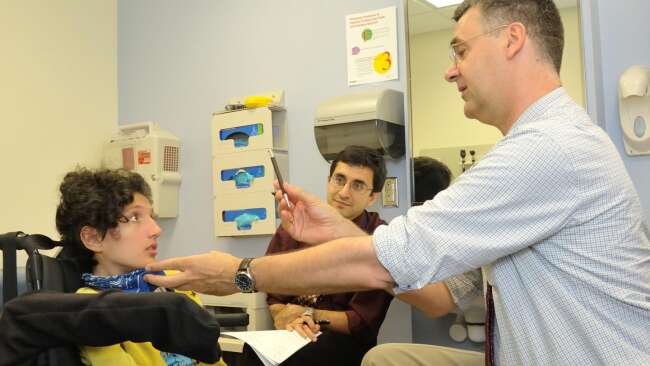
Researchers discover a mysterious illness that plagued 11 children is a new and unique form of Amyotrophic Lateral Sclerosis (ALS).
Amyotrophic Lateral Sclerosis (ALS) is a neurodegenerative disorder of motor neurons that results in a progressive loss of voluntary movements. Eventually, people lose the ability to carry out daily functions such as eating, speaking, moving, and even breathing. There is currently no cure for the disease and the average life expectancy is 2-5 years. Although most cases occur in people aged 50 to 60 years, scientists have discovered a new form of ALS that occurs in children.
ALS is a paralyzing and often fatal disease that usually affects middle-aged people. We found that a genetic form of the disease can also threaten children. Our results show for the first time that ALS can be caused by changes in the way the body metabolizes lipids
Dr Carsten Bönnemann, senior author of the study
In 2015, Claudia Digregorio travelled from Italy all the way to the US with hopes of finding a solution for her mysterious illness. Since the age of 5, Claudia had progressively suffered from a weakness of her muscles. Over time, the loss of functioning led to an inability to walk. So much so that by age 15 she had become bound to a wheelchair and required a tracheostomy tube to breathe.
In the US, she presented to Dr. Carsten Bönnemann, a senior investigator at the National Institute of Neurological Disorders and Stroke (NINDS). Dr. Bönnemann and his team conducted genomic sequencing of her and her family’s DNA. They discovered mutations within the SPTLC1 gene. This particular SPTLC1 gene variant was only present in Claudia’s DNA. SPLTC1 gene controls production of fats, called sphingolipids, that make up a majority of the brain tissue. A mutation results in an increased production of these fats.
Mystery Solved
Further research resulted in the discovery of 11 patients with similar symptoms as Claudia. Similar to her, they had also suffered from problems in walking, gait abnormalities, and stiffness in their lower limbs. All seem to fit the description of ALS. However, unlike other cases of ALS, the one in children appeared at an early age and progressed slower than usual.
These young patients had many of the upper and lower motor neuron problems that are indicative of ALS. What made these cases unique was the early age of onset and the slower progression of symptoms. This made us wonder what was underlying this distinct form of ALS.
Dr Payam Mohassel, lead author
The team of researchers then conducted genetic sequencing on the 11 children and their parents. Results showed presence of SPTCL1 gene variants within all. Five of the subjects belonged to a family where all children carried an SPTLC1 gene variant, and all suffered from varying severity of the disease. They had inherited the gene from the father. On the other hand, the remaining six patients’ parents lacked a SPTCL1 gene variant. Thus, the researchers called these ‘de novo’ mutations. Moreover, all six patients suffered from similar symptoms as Claudia with early onset and progressive worsening.
Additionally, the researchers tested an experimental therapy in lab dishes containing the patients’ skin cells. Using small interfering RNA (siRNA), they silenced the mutated gene. The experiment resulted in a return of sphingolipids back to normal.
The team hopes that their study will shed light on this new form of ALS in children, and help researchers develop effective treatments.
Reference:
Mohassel, P. et al., Childhood Amyotrophic Lateral Sclerosis Caused by Excess Sphingolipid Synthesis. Nature Medicine, May 31, 2021 DOI: 10.1038/s41591-021-01346-1



